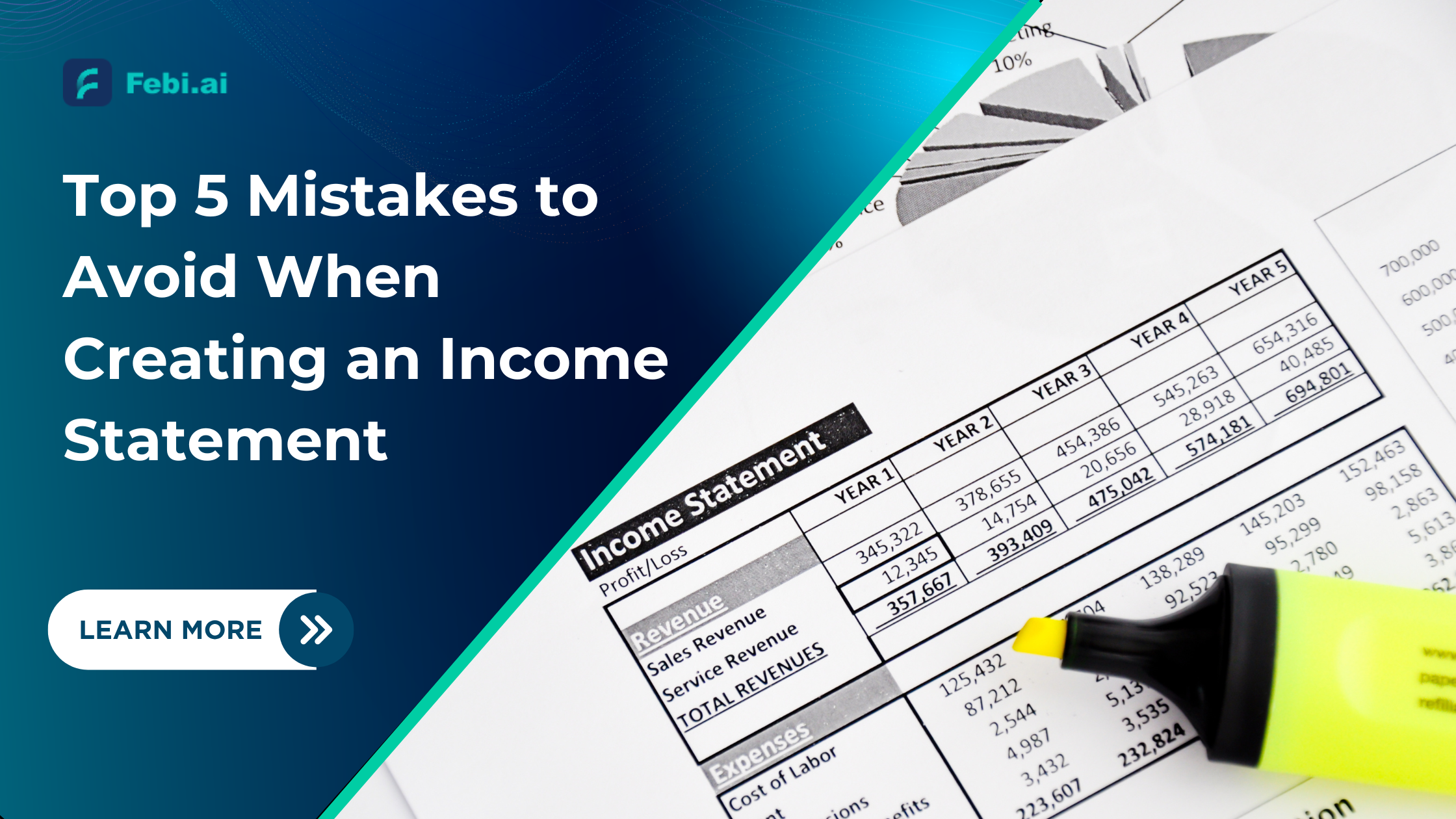Creating an income statement is a fundamental part of running any business, whether you’re a startup founder, a small business owner, or a seasoned financial professional. The income statement, also known as the profit and loss statement (P&L), summarizes a company’s revenues, expenses, and profits over a specific period. It helps determine the financial performance of a business and is crucial for decision-making, reporting to stakeholders, and ensuring compliance with tax authorities.
However, even small errors in an income statement can lead to misleading financial insights, incorrect tax filings, or poor strategic decisions. In this article, we’ll explore the top five mistakes to avoid when creating an income statement to ensure your financial reporting is accurate and insightful.
Mistake #1: Misclassifying Revenues and Expenses
One of the most common yet damaging mistakes in preparing an income statement is incorrectly categorizing revenues or expenses. Misclassification can distort the true profitability of your business and mislead readers of the report.
Examples of Misclassification:
Treating a loan received as revenue.
Recording owner withdrawals or personal expenses as business expenses.
Categorizing a capital expense (e.g., purchase of machinery) as an operational expense.
How to Avoid:
Understand the difference between operating revenue, non-operating revenue, and other income.
Use a standardized chart of accounts to classify transactions consistently.
Regularly review and reconcile accounts to ensure transactions are categorized correctly.
Mistake #2: Ignoring Accrual Accounting Principles
Many small businesses rely on cash-basis accounting, especially in their early stages. However, failing to apply accrual accounting principles when preparing an income statement can give an inaccurate picture of profitability.
Why It Matters:
Accrual accounting records income when it’s earned and expenses when they’re incurred, regardless of when the cash is received or paid. This method gives a more realistic view of financial performance.
Common Accrual Accounting Errors:
Not recording accounts receivable or accounts payable.
Failing to include unbilled income for services already rendered.
Ignoring prepaid expenses and deferred revenue.
How to Avoid:
Adopt accrual accounting, especially for GAAP compliance and investor reporting.
Use accounting software that supports accrual-based entries.
Work with a professional accountant to understand timing differences and adjust your records accordingly.
Mistake #3: Omitting Non-Cash Items Like Depreciation and Amortization
Non-cash items such as depreciation and amortization are crucial for understanding a business’s long-term financial health. Excluding these items from your income statement can overstate net income and misrepresent actual profitability.
Why It’s Important:
Depreciation reflects the gradual reduction in value of tangible assets (like equipment).
Amortization reflects the spreading of intangible asset costs (like patents or software licenses) over time.
How to Avoid:
Track and update the useful life and salvage value of assets.
Record regular depreciation and amortization entries.
Include these expenses under Operating Expenses on your income statement.
Mistake #4: Inconsistent Reporting Periods
An income statement must reflect financial activity over a clearly defined and consistent time period, such as monthly, quarterly, or annually. Mixing up reporting periods can create confusion and reduce the reliability of your financial data.
Common Issues:
Comparing income statements from different lengths of time (e.g., a 30-day month vs. a 90-day quarter).
Failing to close periods properly in accounting systems.
Including transactions outside of the reporting window.
How to Avoid:
Define a consistent financial reporting schedule and stick to it.
Close your books each month and prevent backdated changes.
Use automated accounting software that locks prior periods once closed.
Mistake #5: Overlooking One-Time or Irregular Items
Income statements should reflect the core operations of your business. Including one-time gains or losses—like the sale of an asset or lawsuit settlement—without clear disclosure can mislead readers into thinking your regular profits are higher or lower than they actually are.
Examples of One-Time Items:
Income from selling a building or equipment.
Restructuring costs or large write-offs.
Lawsuit settlements or insurance payouts.
Why It Matters:
Investors, lenders, and managers need to separate recurring income from extraordinary items to make informed decisions.
How to Avoid:
Use a separate line item for Other Income or Extraordinary Items.
Provide footnotes or disclosures for unusual transactions.
Avoid inflating operational profit with non-recurring gains.
Additional Tips for a Flawless Income Statement
Here are a few bonus best practices to ensure your income statement remains accurate and helpful:
✅ Reconcile Your Accounts Regularly
Always reconcile your bank statements, receivables, and payables to ensure every item is accounted for correctly.
✅ Use Accounting Software
Leverage modern tools like febi.ai, Xero, Zoho Books, or AI-powered software like Febi.ai for automated categorization, real-time tracking, and seamless reporting.
✅ Seek Professional Help
When in doubt, consult a certified accountant or financial advisor. They can help you set up proper accounting systems and review your financial statements before filing or sharing them with stakeholders.
✅ Include Comparative Analysis
Add comparative figures from previous periods (month-over-month or year-over-year) to help analyze trends and performance changes.
Conclusion
An accurate income statement is not just a compliance document—it’s a window into the financial soul of your business. Avoiding the five common mistakes outlined in this article—misclassification, incorrect timing, omission of non-cash items, inconsistent reporting periods, and misleading one-time items—will ensure your income statement is a reliable, valuable tool for decision-making.
By practicing diligence and using the right tools and expertise, you can generate error-free financial reports that tell the true story of your business’s performance and support strategic growth.








